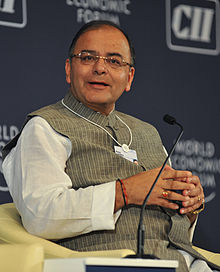By Bappaditya Chatterjee
Kolkata– Against the backdrop of only half of the about Rs 8 lakh crore (over $125 billion) investments proposed in the past three editions of Bengal Global Business Summit reaching the “process” stage, the just concluded fourth edition has seen a Rs 15,000 crore drop in proposals from last year.
Experts and economists say the challenge for the state now is to translate higher proportions of these proposals into Industrial Entrepreneur Memorandums (IEMs) filed with the Department of Industrial Policy and Promotion (DIPP) of the central government and also move into the implementation stage.
According to the state government, the 2015 and 2016 summits had fetched investment proposals of Rs 2.43 lakh crore and over Rs 2.5 lakh crore, respectively. The third edition netted proposals of over Rs 2.35 lakh crore.
This year, the summit has received proposals of about Rs 219,925 crore, the lowest since the government kicked off the process of branding the state.
Describing the latest edition as the “top of the top” business summit, Chief Minister Mamata Banerjee said: “Even last year, of what we discussed, 50 per cent of the businesses (proposals) are in process… Earlier also, the situation was like this.”
Expressing satisfaction, West Bengal Finance and Commerce and Industries Minister Amit Mitra, a former Secretary General of industry lobby FICCI, said the state had done well to draw investments given the low gross capital formation in the country and slower Gross Domestic Product (GDP) growth.
Industry doyens like L.N. Mittal, Mukesh Ambani and Sajjan Jindal and other majors praised Banerjee’s leadership and the state government for creating a friendly climate and an enabling policy infrastructure.
However, the chink in the armour remains the realisation of these business announcements.
The state’s opposition parties — the Congress, the Bharatiya Janata Party (BJP) and the Communist Party of India-Marxist (CPI-M) — have demanded a White Paper from the government on the number of proposals the state had received in the earlier summits and those that had fructified.
“The signing of memorandum of understanding in a business summit, like this, will gain more relevance if these pacts are translated into filing in the Department of Industrial Policy and Promotion (DIPP) of central government. A general trend suggests that only about 10-15 per cent of the total proposals coming from these summits are filed with DIPP. Though, there are some exceptions, the trend is applicable to almost all the states and West Bengal is no exception,” economist and Professor of Jadavpur University Ajitava Raychaudhuri told IANS.
Investments proposed at a particular summit do not necessarily have to be filed in the same year and the IEMs filed may include earlier proposals.
Union Commerce Ministry data suggests that out of 2,279 IEMs filed during the year 2016-17, 406 were for Gujarat, 376 for Maharashtra and 322 for Karnataka. However, in terms of proposed investments, Karnataka led with Rs 171,347 crore followed by Gujarat (Rs 73,559 crore) and Maharashtra Rs 38,188 crore.
In 2016-17, West Bengal bagged 63 IEMs worth Rs 4,690 crore.
“In terms of implementation of the Industrial Entrepreneur Memorandums, the picture is even worse. Again, the trend suggests that only about 10-15 per cent of IEMs filed are being reported as implemented. This is an all-India phenomenon and includes West Bengal. So, the challenge for the state is to improve the proportion of filings and implementations,” Raychaudhuri added.
Do these summits have any relevance? Given the “dull” investment scenario in India, several states have been competing to net industries and investments and organising such business summits is becoming necessary to be in the competition, Raychaudhuri said.
“It wouldn’t be correct to see West Bengal in isolation. The world economy, as well as India’s, is going through a sluggish trend. Unless and until the country’s economy is steadied, investors will continue to be cautious,” economist and former Professor of Presidency University Debnarayan Sarkar said.
Echoing Raychaudhuri, Sarkar told IANS: “There is a marked difference between IEMs filed and investments proposed in summits. But West Bengal has a better translating rate than leading states. For example, in 2016, proposed investment of IEMs filed was about Rs 56,000 crore in Gujarat while IEMs implemented were worth about Rs 8,200 crore. In contrast, West Bengal saw about Rs 5,204 crore of proposed investments in 2016 and implementation was Rs 3,400 crore.”
However, the flip side of the summit was absence of central ministers, which could be a direct off-shoot of Banerjee’s constant anti-Narendra Modi stance.
Usually, central ministers attract industry honchos and public sector entities tend to announce projects that swell the investment kitty. But unlike the previous editions, no major business announcements surfaced from central PSUs this time.
According to official figures, 350 delegations from over 32 countries and over 4,000 delegates participated at the summit. (IANS)






